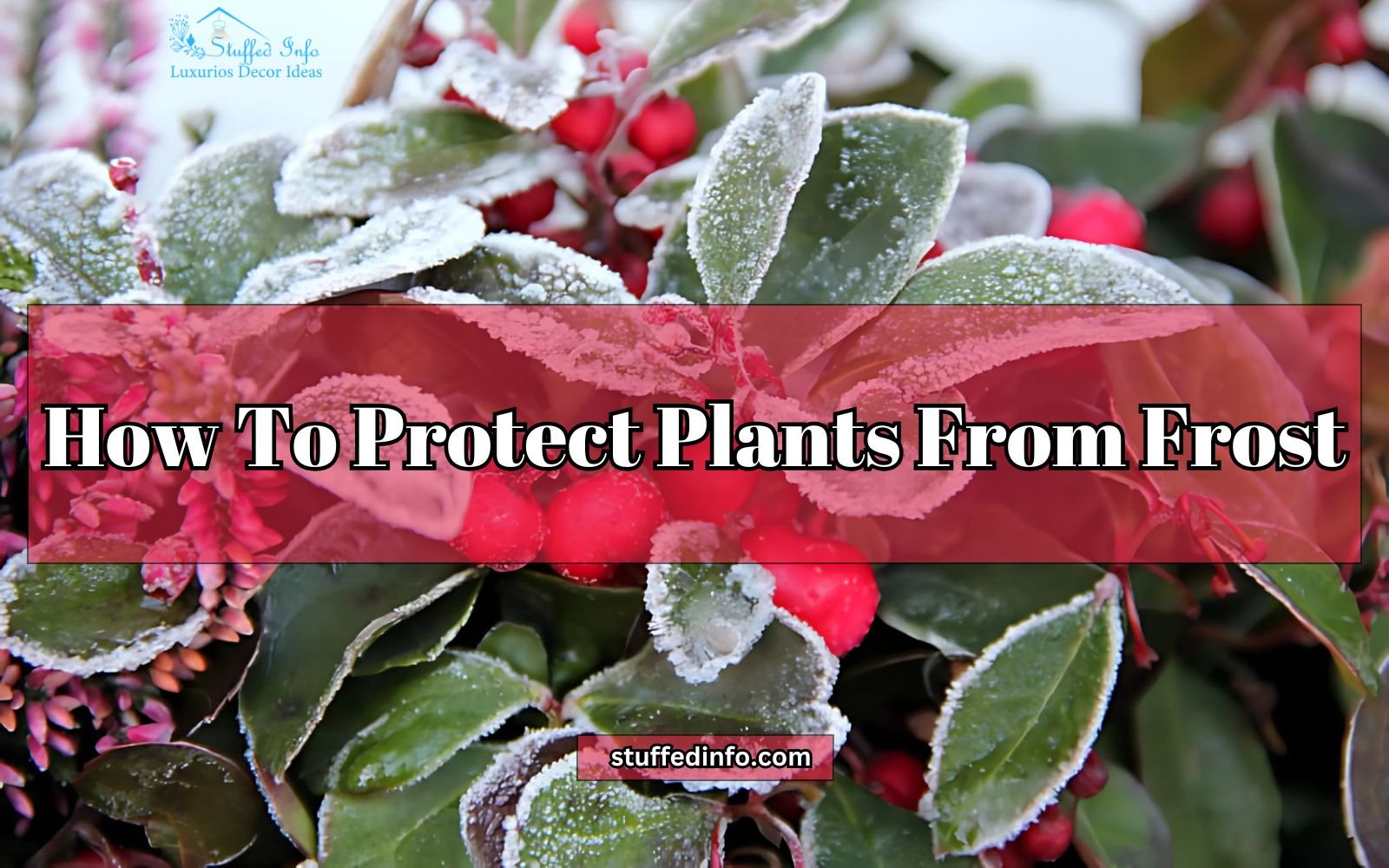As winter gets closer, frost can become a big problem for our gardens. For those who love to garden, keeping the garden safe during the cold months is very important. Frosts can hurt tender leaves, slow down growth, and even kill plants if we do not take appropriate actions. In this blog, we’ll explore Signs, Causes, Protect Plants From Frost, and which plants need extra care during frost season. With some simple strategies, you can help your plants survive and thrive despite the chill.
Table of Contents
ToggleSigns Of Frost On The Plants
Here’s how to identify these common signs of frost injury on your plants.
- Leaf Hardiness: Frost can make leaves soft and limp instead of firm and crisp. This change further shows that the leaves are stressed and not healthy due to the cold.
- Water-Soaked Spots: Frost creates ice inside plant leaves, causing wet & clear spots to appear. These spots can damage the leaf tissue and lead to decay if not resolved.
- Brown Or Black Patches: Frost can kill some leaf cells, further creating brown of black patches. Hence, these dead areas may spread and cause more damage to the plant if exposed to cold.
- Browning Leaves: Leaves may turn yellow or brown after frost damage. This discoloration means the plant is struggling and cannot recover. Hence, it may further lead to its decline.
By learning to spot these signs, gardeners can protect plants from frost . Stay alert and care for your garden as the seasons change.
Causes Of Frost Damage
It can be very confusing when you see frost on your plants. Knowing the reasons behind why frost forms is crucial for gardeners to keep their plants healthy and safe. It will also help you to protect plants from frost. So, here are some reasons you should know about.
- Low Temperature: When temperatures drop below freezing point at night, the air moisture can freeze on the plant surface. As a result, it may further create frost around the plant.
- Less Humidity Level: High humidity means more air moisture. So, it increases the chances of frost forming on plants.
- Clear Night Skies: On clear nights, heat escapes from the ground. It further causes cooler temperatures that can lead to frost on plants.
- Chilly Areas: Gardens in low areas collect cold air. Hence, it makes them more likely to experience frost than higher geographical areas.
- Plant’s Body Structure: Some plants hold more moisture in their leaves than many other plants. Thus, it can make them more likely to get frost on them.
To summarize, you should understand these reasons to protect plants from frost. By changing the way you care for the plants, you will be able to keep them protected against cold weather.
Ways To Protect Plants From Frost
It is very important for you to protect plants from frost. By using these simple steps to protect them, you’ll be able to help them to grow well and survive cold nights.
Bring Potted Plants Inside:
If frost is coming, move your potted plants indoors in the evening. Since they’re in containers, their roots are more vulnerable to cold.
Use Grow Tents:
Grow tents create a safe and warm space for plants. They further trap heat and keep the environment stable as well. Moreover, it also protects plants from frost.
Water Plants in the Afternoon:
Water your plants in the afternoon before the temperature drops. Moist soil holds heat better and helps protect plant roots from freezing.
Add Mulch Around Plants:
Cover the soil around your plants with mulch like straw, leaves, or wood chips. This will help keep the soil warm and protect the roots from frost.
Use a Cloche to Cover Small Plants:
A cloche is a cover (plastic or glass) that keeps smaller plants warm. You can also use things like upside-down pots or cut plastic bottles. Put them over your plants at night and take them off in the morning to let them get sunlight.
Cover Larger Plants with Blankets:
For larger plants, cover them with blankets, sheets, or towels. Use stakes to create a tent-like structure so the fabric doesn’t touch the plants. This keeps the warmth in.
These easy and simple and easy tips will help protect plants from frost damage. With some care, you may keep them strong and healthy all season long.
When To Cover Plants To Prevent Frost
When temperatures are expected to be between 36°F and 32°F, cover your plants. Cold temperatures can increase in low-lying areas, so consider covering your plants if temperatures drop below 40°F. It is best to do this in the afternoon, before the temperatures drop, so you can see them clearly while covering them.
Which Plants Do Need Protection From Frost?
Some plants cannot handle frost well. Knowing which plants need caring tips will help you to protect plants from frost as well as keep your garden healthy throughout the winter season.
- Young Seedlings: Young seedlings are very delicate and can be harmed by frost. You can protect plants from frost to help them grow strong and survive cold temperatures during their early stages.
- Tropical Plants: Tropical plants love warm weather and cannot handle frost at all. If they get too cold, they can get damaged or die, so they need extra defense to protect plants from frost.
- Delicate Perennials: Many delicate perennials (Such as certain flowers and grasses) are sensitive to frost. Keeping them safe during colder months helps them stay healthy and bloom in spring.
- Tender Vegetables & Fruits: Vegetables & fruits (Such as tomatoes and squash) can be hurt by frost. Covering them or bringing them inside helps protect them, further ensuring you get a good harvest.
Best Time to Plant Frost-Sensitive Plants
Plant frost-sensitive plants after the last frost date in your area to avoid frost damage. If you plant too early, young plants can freeze and die.
Top Tips:
Check Local Frost Dates: Find the average last frost date for your area using local resources or online gardening guides.
Check Weather Forecasts: Stay updated on weather forecasts to avoid planting before cold weather.
Check Soil Temperatures: Make sure the soil is warm enough for plants to grow.
Use Protection If Needed: If planting early, consider using row covers or other methods to protect plants from frost.
Conclusion
In conclusion, protecting your plants from frost is an essential part of keeping your garden thriving during the cold months. By understanding the signs, causes, and using simple protective measures, you can help your plants stay healthy. With these easy steps, you can ensure that your plants continue to grow strong and thrive even through the winter.
FAQs
Question. Can I save plants damaged from frost?
Answer. Yes! You can often save frost-damaged plants by cutting off hurt leaves and giving them water and warmth.
Question. How do we know if our plants might freeze?
Answer. You should watch local weather reports for low temperatures. Moreover, you should also notice if air settles in your garden during the night time.
Question. Is it okay to use plastic covers for plants?
Answer. You need to avoid plastic, as it can trap moisture and further harm plants. Thus, you must use breathable materials, such as fabric or burlap instead.







